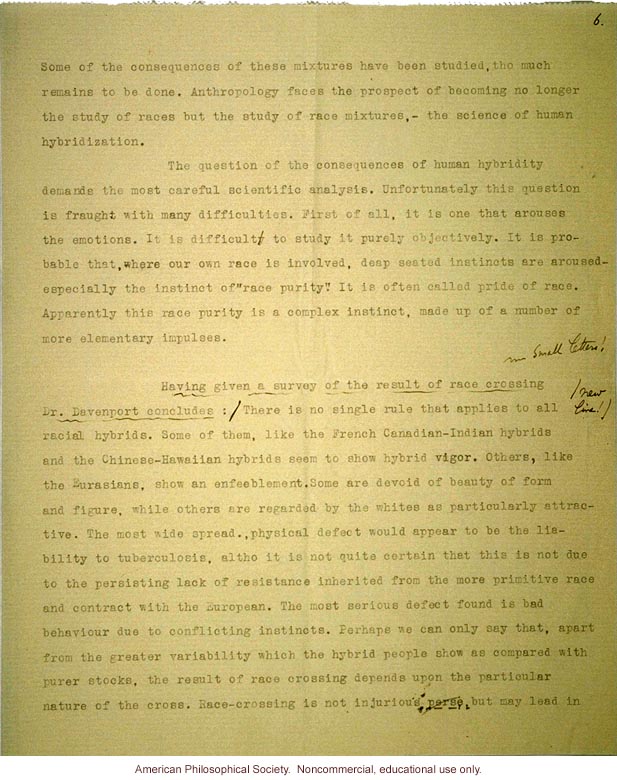Some of the consequences of these mixtures have been studied, tho much remains to be done. Anthropology faces the prospect of becoming no longer the study of races but the study of race mixtures, - the science of human hybridization.
The question of the consequences of human hybridity demands the most careful scientific analysis. Unfortunately this question is fraught with many difficulties. First of all, it is one that arouses the emotions. It is difficult to study it purely objectively. It is probable that, where our own race is involved, deep seated instincts are aroused - especially the instinct of "race purity". It is often called pride of race. Apparently this race purity is a complex instinct, made up of a number of more elementary impulses.
Having given a survey of the result of race crossing Dr. Davenport concludes:
There is no single rule that applies to all racial hybrids. Some of them, like the French Canadian-Indian hybrids and the Chinese-Hawaiian hybrids seem to show hybrid vigor. Others, like the Eurasians, show an enfeeblement. Some are devoid of beauty of form and figure, while others are regarded by the whites as particularly attractive. The most wide spread, physical defect would appear to be the liability to tuberculosis, altho[sic] it is not quite certain that this is not due to the persisting lack of resistance inherited from the more primitive race and contract with the European. The most serious defect found is bad behaviour due to conflicting instincts. Perhaps we can only say that, apart from the greater variability which the hybrid people show as compared with purer stocks, the result of race crossing depends upon the particular nature of the cross. Race-crossing is not injurious [strikeout]perse[end strikeout], but may lead in


